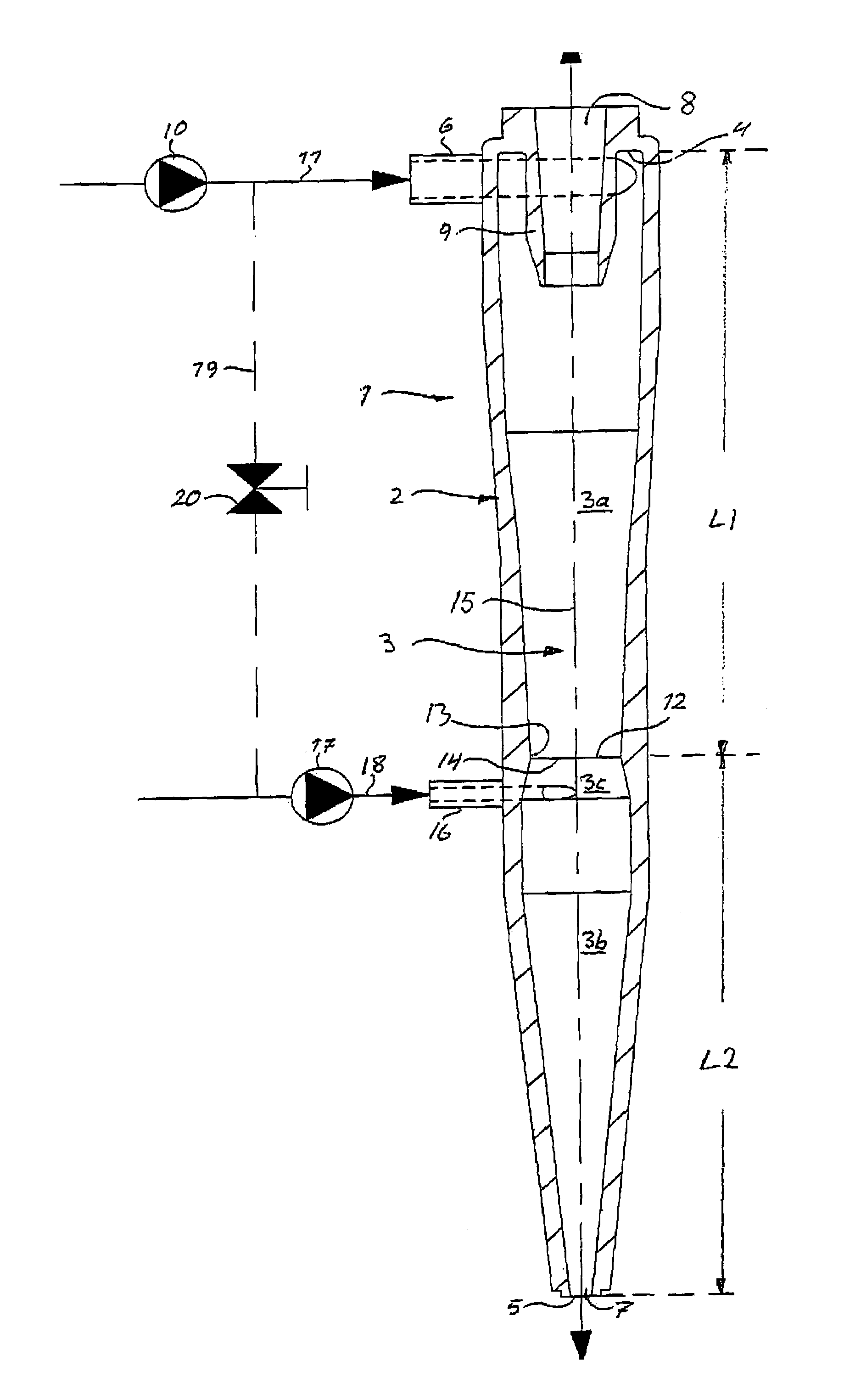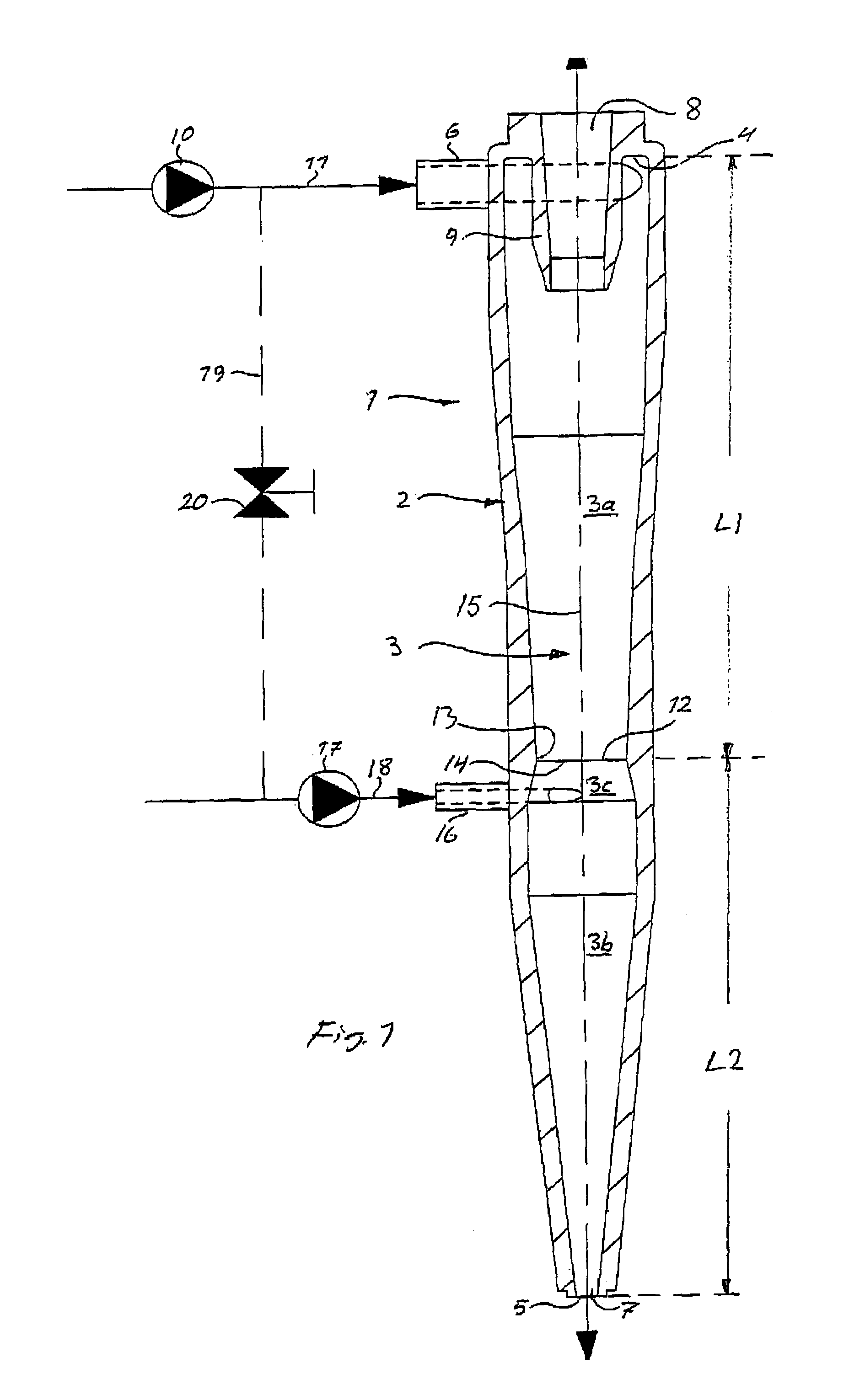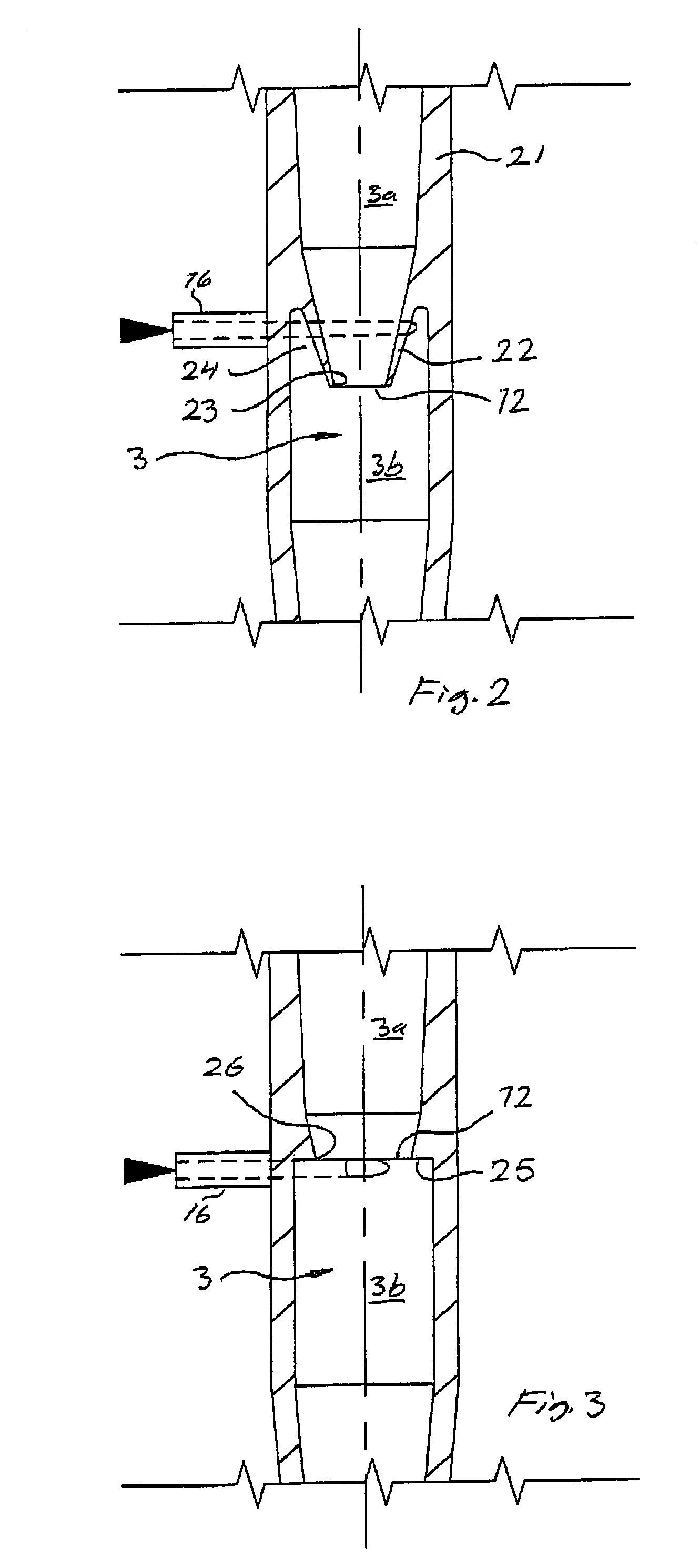Separation of fibre pulp suspensions containing relatively heavy contaminants
a technology of fibre pulp suspension and hydrocyclone unit, which is applied in the direction of solid separation, textiles and paper, paper material treatment, etc., can solve the problems of negatively affecting the separation efficiency of the fibre network, and achieve the effects of enhancing separation efficiency, reducing energy consumption, and increasing production capacity
- Summary
- Abstract
- Description
- Claims
- Application Information
AI Technical Summary
Benefits of technology
Problems solved by technology
Method used
Image
Examples
Embodiment Construction
[0043]Referring to the drawing figures, like reference numerals designate identical or corresponding elements throughout the several figures.
[0044]FIG. 1 shows a hydrocyclone unit 1 of the invention, which comprises a housing 2 that forms an elongate generally tapering separation chamber 3 with a base end 4 and an apex end 5. An inlet member 6 is provided on the housing 2 and designed to feed a fibre suspension to be separated tangentially into the separation chamber 3 at the base end 4 thereof. There are a reject fraction outlet 7 at the apex end 5 of the separation chamber 3 for discharging a created reject fraction of the suspension and a central accept fraction outlet 8, defined by a conventional vortex finder 9, at the base end 4 of the separation chamber 3 for discharging a created central fraction of the suspension.
[0045]In operation, a pump 10 pumps a fibre suspension containing heavy contaminants through a conduit 11 to the inlet member 6, which feeds the suspension tangent...
PUM
| Property | Measurement | Unit |
|---|---|---|
| size | aaaaa | aaaaa |
| diameter | aaaaa | aaaaa |
| length L2 | aaaaa | aaaaa |
Abstract
Description
Claims
Application Information
 Login to View More
Login to View More - R&D
- Intellectual Property
- Life Sciences
- Materials
- Tech Scout
- Unparalleled Data Quality
- Higher Quality Content
- 60% Fewer Hallucinations
Browse by: Latest US Patents, China's latest patents, Technical Efficacy Thesaurus, Application Domain, Technology Topic, Popular Technical Reports.
© 2025 PatSnap. All rights reserved.Legal|Privacy policy|Modern Slavery Act Transparency Statement|Sitemap|About US| Contact US: help@patsnap.com



